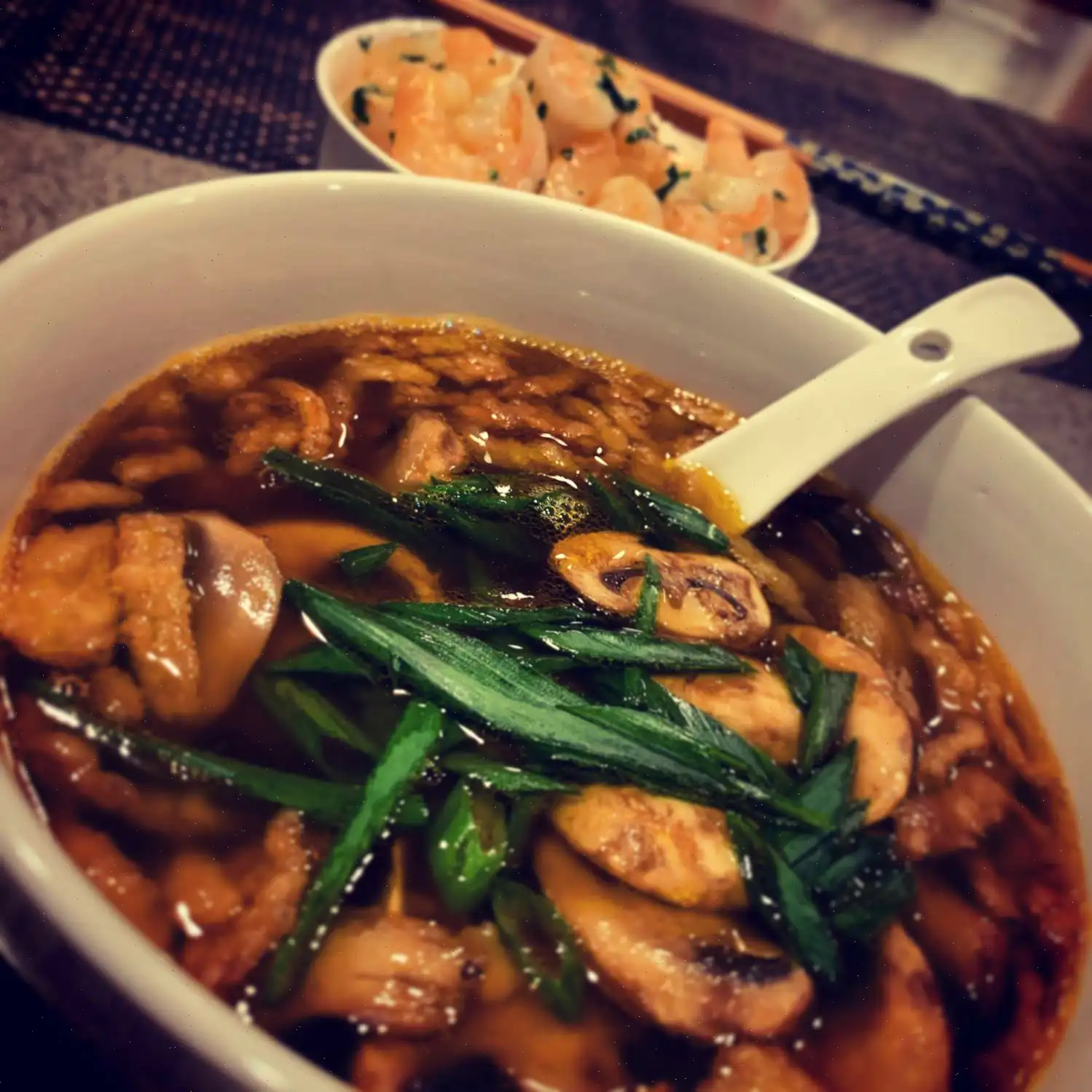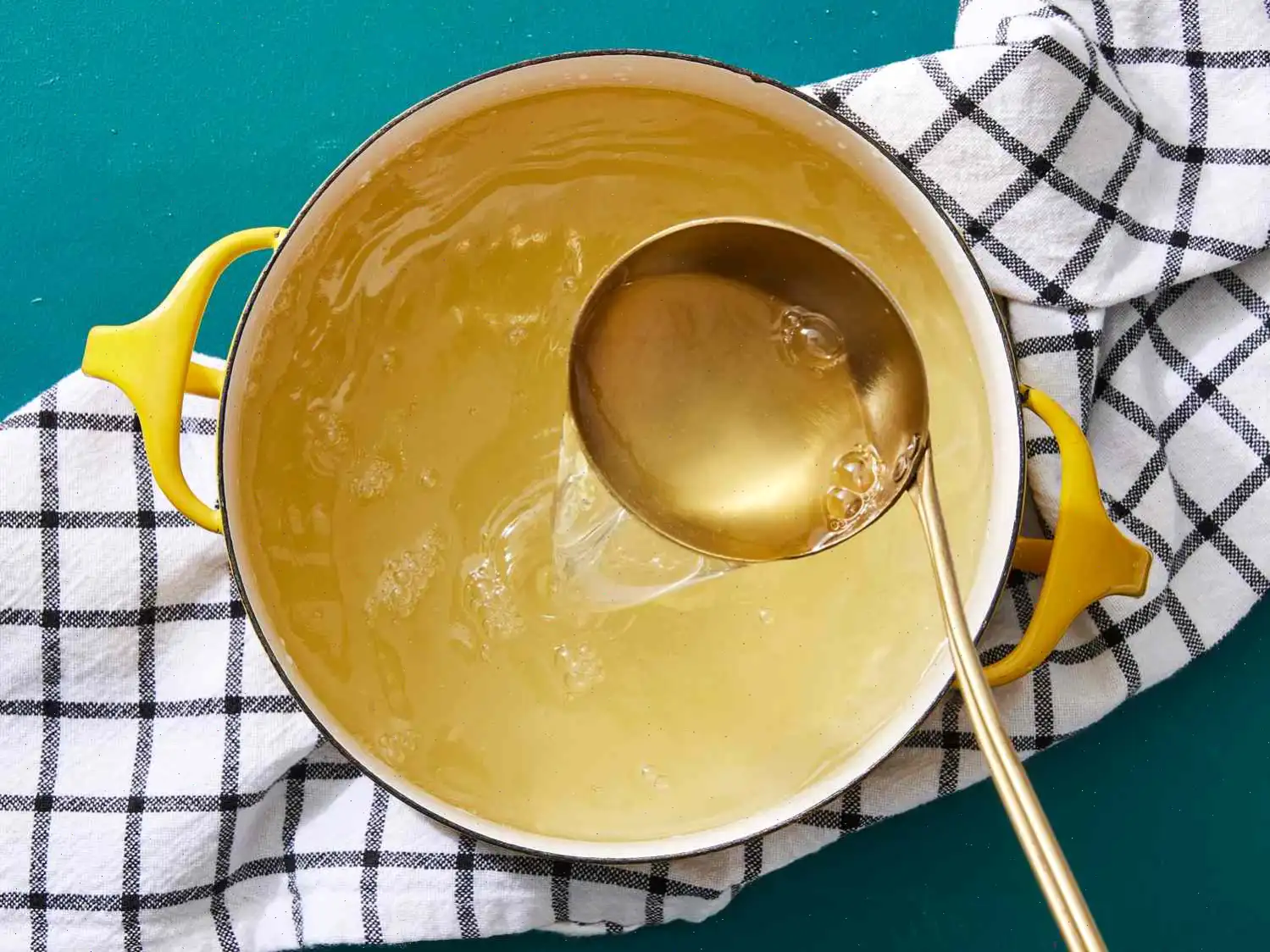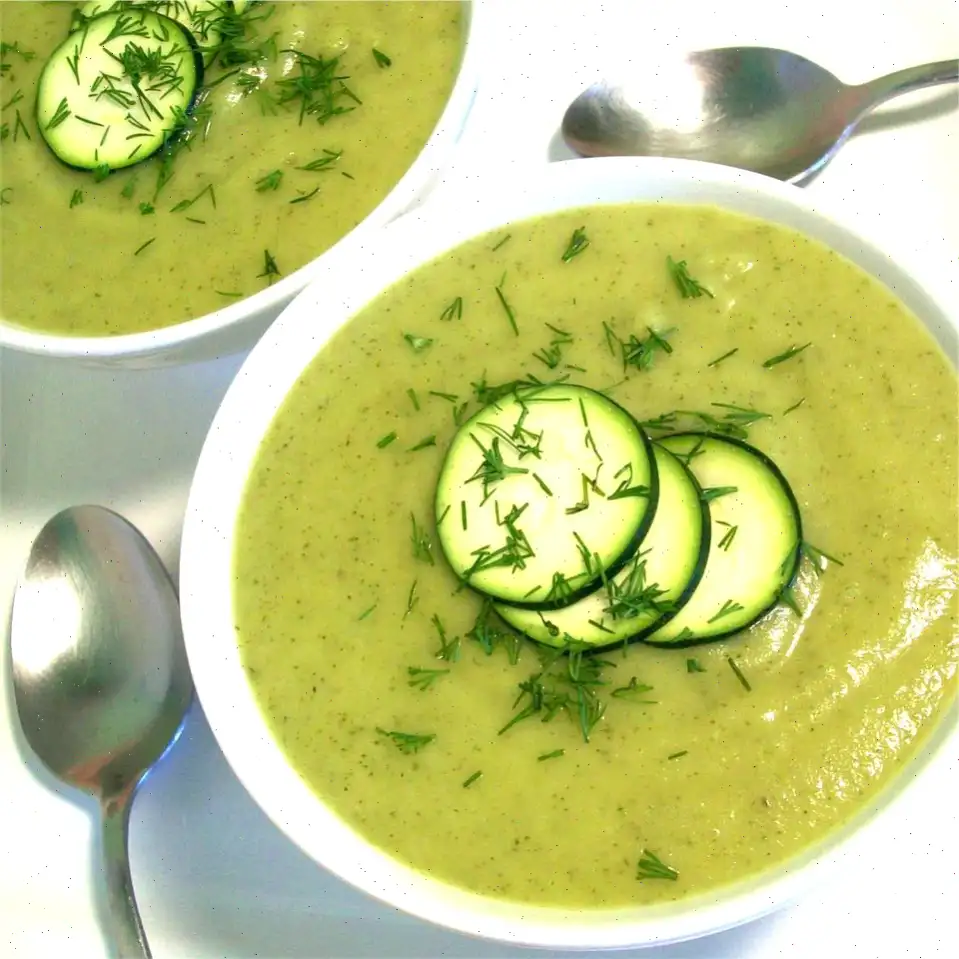
Authentic Miso Soup Recipe
Ingredients
- 4 cups water
- 1 (4 inch) piece dashi kombu (dried kelp)
- cup bonito flakes
- 6 ounces tofu, cut into chunks
- 1 teaspoon dried wakame
- 3 tablespoons miso paste
- cup chopped green onions
Directions
Step 1: Heat 4 cups of water in a large pot over low heat. Once the water is warm, add the kombu and cook until it reaches a gentle simmer.
Step 2: Stir in the bonito flakes and remove the dashi stock from the heat. Let it sit, uncovered, for about 5 minutes to allow the flavors to meld together.
Step 3: Strain the dashi, discarding the solids, and set the liquid aside.
Step 4: In a separate pot, heat 3 cups of the prepared dashi over medium heat.
Step 5: Add the tofu and dried wakame to the pot. Stir gently to combine the ingredients.
Step 6: Remove 1 cup of the warmed dashi from the pot and transfer it to a small bowl. Whisk in the miso paste until fully dissolved.
Step 7: Pour the miso mixture back into the pot with the remaining dashi. Stir to combine and continue heating until the soup is warmed through.
Step 8: Serve the soup hot, garnished with freshly chopped green onions.
Nutrition Facts (per serving)
- Calories: 65
- Total Fat: 3g (4% Daily Value)
- Saturated Fat: 0g (2% Daily Value)
- Sodium: 511mg (22% Daily Value)
- Total Carbohydrates: 5g (2% Daily Value)
- Dietary Fiber: 1g (4% Daily Value)
- Total Sugars: 1g
- Protein: 6g (12% Daily Value)
- Vitamin C: 1mg (1% Daily Value)
- Calcium: 167mg (13% Daily Value)
- Iron: 3mg (15% Daily Value)
- Potassium: 98mg (2% Daily Value)
Servings Per Recipe: 4
* Percent Daily Values are based on a 2,000 calorie diet. Your daily values may be higher or lower depending on your calorie needs.
Miso soup is a beloved staple of Japanese cuisine, known for its comforting, umami-rich broth. This classic dish combines miso paste, dashi (a stock made from dried fish and seaweed), tofu, and wakame seaweed. Though it is served at virtually every Japanese meal, its history and variations are as rich as its flavor. Below, we delve into the origins of miso soup, its regional adaptations, how it differs from similar dishes, and where it is traditionally served. Plus, some fun facts you might not know!
History of Miso Soup
The history of miso soup can be traced back over a thousand years. Miso itself dates back to the 7th century in Japan, where it was initially used as a form of preserved food. It became a key component of Japanese daily life as the practice of fermentation evolved. Miso soup, in its current form, emerged around the 16th century during the Edo period, when it became popular as part of traditional Japanese breakfasts. The soup was not only a nourishing dish but also a symbol of Japanese hospitality and culture. Its simplicity and umami flavor have made it an enduring favorite throughout the centuries.
Regional Variations of Miso Soup
While the basic ingredients of miso soupmiso paste, dashi, tofu, and wakameremain consistent, regional variations exist across Japan. For instance, in the Kanto region (which includes Tokyo), miso soup often uses a lighter, sweeter white miso, whereas in the Kansai region (including Kyoto and Osaka), a darker, saltier red miso is preferred. In some regions, miso soup may also feature additional ingredients such as mushrooms, vegetables, or even seafood. These regional differences are a reflection of local tastes, availability of ingredients, and cultural practices.
How Miso Soup Differs from Similar Dishes
Though miso soup shares similarities with other Asian soups, it stands out due to its distinct flavor profile. Unlike Chinese hot and sour soup or Korean kimchi jjigae, which are often more complex or spicy, miso soup is primarily focused on the savory umami taste from the miso paste and dashi. Additionally, miso soups broth is relatively clear, with tofu and wakame providing texture and substance. This contrasts with many other soups, which may have thicker or more robust broths. Miso soups simplicity and delicate balance make it a unique part of Japanese cuisine.
Where Miso Soup is Traditionally Served
Miso soup is a standard part of many traditional Japanese meals, often served as a side dish. It is commonly included in breakfast spreads, where it pairs with rice and pickles. In restaurants, it is typically served alongside sushi, bento boxes, or other main dishes. Miso soup can also be found in home kitchens, where families enjoy it as a comforting, everyday dish. Its versatility makes it suitable for various occasions, whether a simple meal at home or a special celebration.
Fun Facts About Miso Soup
- In Japan, miso soup is often enjoyed as part of the first meal of the day. It is believed to have health benefits, particularly in aiding digestion.
- There are hundreds of different types of miso paste in Japan, each with its unique flavor. The three main types are white, red, and mixed miso, each varying in saltiness and fermentation time.
- In some regions, miso soup is served with a raw egg dropped into the hot broth, creating a creamy texture.
- Miso soup has become increasingly popular outside Japan. It is now commonly found in international supermarkets and restaurants worldwide, celebrated for its health benefits, including high levels of protein and beneficial probiotics.
Whether you're making it at home or ordering it in a restaurant, miso soup is more than just a dishit's a taste of Japanese culture, history, and culinary tradition.
FAQ about Authentic Miso Soup Recipe
Comments
Joseph Martinez
03/19/2025 04:16:00 PM
I absolutely love this recipe! It's so easy to prepare and cooks up quickly, but the results are incredibly rewarding. The soup is bursting with flavor and has a lovely smooth texture. I also tried adding some sliced shitake mushrooms as a variation, and it was absolutely delicious.
Kevin Lewis
06/11/2023 08:23:01 AM
Absolutely fantastic and simple to make! I have finally mastered a miso soup recipe that even surpasses my favorite Japanese restaurant :)
Jerry Wright
01/28/2023 11:47:43 AM
I experimented with using broth instead of water in the recipe, and unfortunately it turned out too salty for my taste. However, I really enjoyed the flavor and textures of the dish overall. Despite the saltiness issue, I'm still planning to make it again in the future!
Kenneth Perez
09/16/2024 03:24:44 PM
I decided to enhance the dish by adding a bag of chopped kale and spinach mix, and I absolutely loved the result. The only tweak I would make next time is to press my tofu to help it absorb the flavorful broth better. While I did enjoy the slightly raw taste of the tofu, I think allowing it to soak up more broth would have elevated the dish even further.
Heather Johnson
12/01/2022 05:26:29 PM
I had a wonderful time preparing this soup for my family. The look on their faces spoke volumes! They mentioned that it felt like they were dining in Tokyo, Japan. It's incredible how the fish flakes enhance the flavor of the broth! A huge thank you to the Chinese and Japanese cultures for sharing miso with the world!








